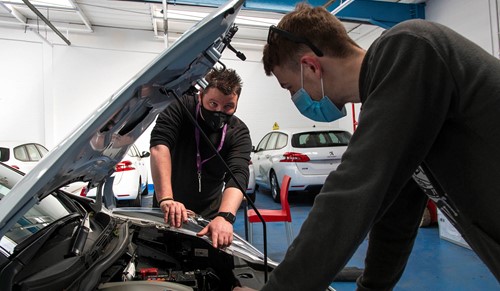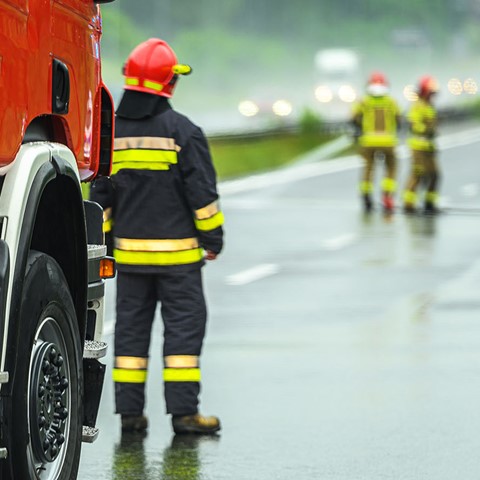Why EV (Electric Vehicle) awareness is vital for first responders
Whether you’re a recovery driver, firefighter, paramedic or police officer, you will likely have attended hundreds of road traffic collisions or breakdowns throughout your career, but would you know what to do if one of the vehicles involved was electric?
You want to make sure that when dealing with a situation on the road that those involved are safe, but also that you are unharmed during the rescue and recovery process.
As electric vehicles (EVs) become more and more common on the roads, so the likelihood of one being involved in an incident increases, but unlike an internal combustion engine (ICE) vehicle, there are extra steps to be aware of before tackling a fire, attempting a recovery, or beginning to extract a casualty.
What is an EV?
In the simplest terms, an EV is any vehicle that uses electricity as its fuel and these are usually split into three main categories pure electric or Battery Electric Vehicles (BEVs) and Hybrids these can take the form of hybrid vehicles (HEV’s) or ‘soft’ hybrids where the battery is only charged by the ICE and does not have a charging port then finally Plug in Hybrid Vehicles (PHEV’s) where the battery is charged by the ICE and has a plug socket for external charging.
While petrol, diesel and LPG are all highly flammable liquids, procedures for dealing with them during an emergency have been in place for years, electricity has more unknowns as the vehicles are silent, so you don’t know if they are still running or not just by listening, and also its invisible, scentless, and can easily spread to other parts of the vehicle through conductive metal and other materials.
This means you must take extra precautions before even touching an EV after a collision or breakdown in order to keep yourself and others at the scene safe.
How should I approach an Electric Vehicle (EV) in an emergency?
Like any other time you approach the scene of a road collision or breakdown, use your own judgement to assess the situation and what action needs to be taken. If there is a fire, it is vital to get it out and cooled as quickly as possible to avoid a battery explosion - water and lots of it is the best tool for the job.
To make the EV safe in the event of an emergency, each one is fitted with a kill switch or cut cord, usually under the bonnet near the firewall or potentially under the boot floor - this will usually take the form of a plug that is removed or a cable which should be cut in two locations and a section completely removed - both methods fully isolate the main vehicle battery making the rest of the car safe to work on.
Like an ICE vehicle, you should also disconnect or isolate the 12v battery under the bonnet too.

Is it safe to tow an Electric Vehicle (EV) that has been damaged or needs repair?
Many manufacturers recommend that EVs shouldn’t be towed as the car’s electric motor is mechanically linked to the wheels and can’t be placed in neutral. Towing one can cause lasting damage to the car’s powertrain, which can also increase the risk of fire.
There are some exceptions to this, but it is on a vehicle by vehicle basis and in an emergency, it is better to avoid any additional risk where possible.
Therefore the two safest ways to recover an EV are by lifting it completely onto the bed of the recovery vehicle, or by using a dolly attached to the rear wheels which locks the wheels of the vehicle in place, but still allows it to roll along the road surface.
Be aware though that winching an EV onto a recovery vehicle can also cause damage to the drivetrain or increase the risk of incident.
Related content:
EV Training School
With more and more EVs on the road, being trained in how to repair and recover them has never been more important, which is why Dundee and Angus College established the first EV maintenance training centre in the North of Scotland to provide essential skills to mechanics, first responders and others in the motor industry on how to deal with this emerging technology.
For more information on the centre and our courses, please contact our Business Partnerships Team on 01241 432 724 or email business@dundeeandangus.ac.uk

